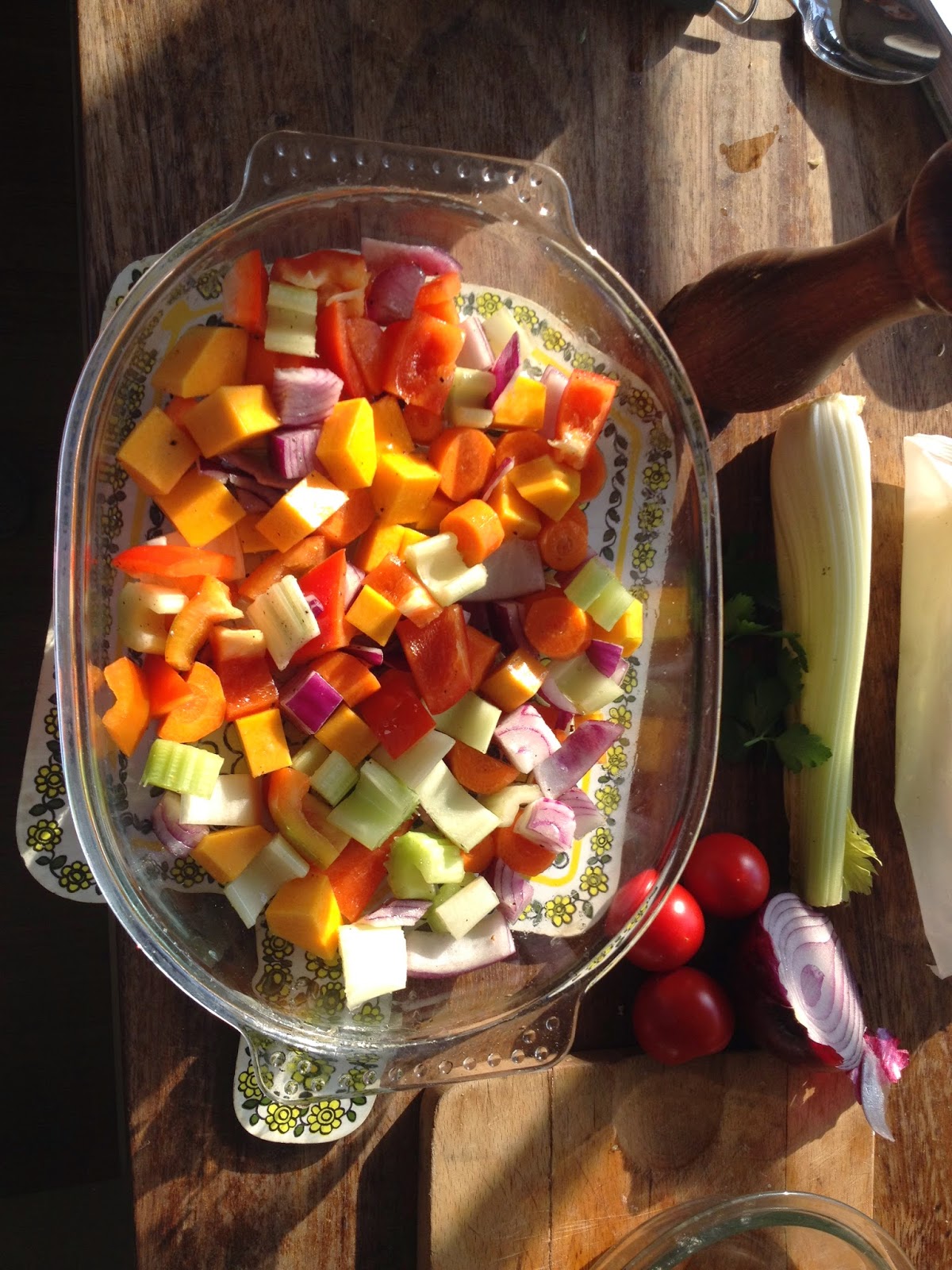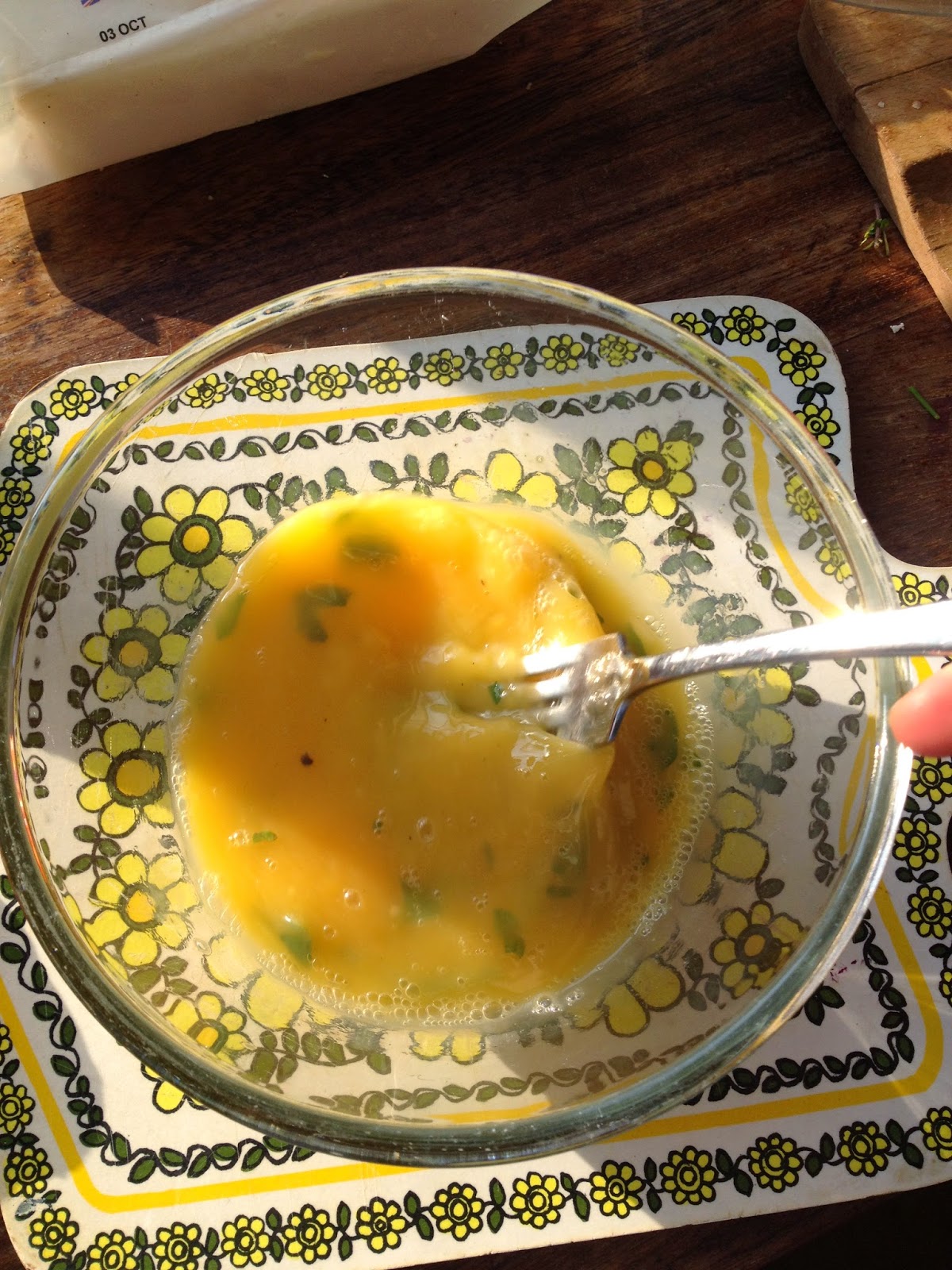This recipe uses half a squash, hence it's part 1. Cover the other half in clingfilm, chuck it in the fridge and hang on in there, I'll post another recipe for it soon! Chickpeas and lentils provide the protein here. Chickpeas are so cheap - a 400g tin costs as little as 55p so it's so worth using them. I improvised a bit here, but the recipe is based on Hugh Fearnley-Whittingstall's North african squash and chickpea stew from his Veg Everyday book. In terms of spices, the ones I used are ones I had in the cupboard anyway and use for other recipes. It may be worth investing in some because they go a long way, and are great for adding flavour and warmth.
Ingredients:
- 1 tbsp olive oil
- 1 onion (red or white)
- 1 garlic clove (if you like using garlic in everyday cooking - entirely optional)
- 2 stalks of celery
- Generous helping of ground black pepper
- Approx. 1/2 tsp ground turmeric
- Approx. 1/2 tsp fennel seeds
- 60g lentils, red or puy - as long as the cooking time on the packet states 15-20 mins.
- 1 x 400g tin of chickpeas - drained and rinsed.
- 1 tin of chopped tomatoes
- Couple of leaves of basil
- Squeeze of tomato ketchup (I swear I put this in everything)
- Handful of fresh parsley leaves (see - we told you those plants would come in handy)
- Half a butternut squash, or about 300-600g... depending on the size of the squash.
- 800g of veg stock - I used 2 stock cubes for this.
- 1 carrot
Recipe - serves 4 (ish):
- Turn your hob onto a medium-high heat, and sauté the onions until just starting to go golden.
- Turn down the heat slightly and add the celery, garlic (if you're using it), turmeric, fennel seeds and pepper and continue to sauté for a couple of minutes.
- Add the lentils, chickpeas, chopped tomatoes, one squeeze of ketchup, basil leaves, and parsley and allow to simmer for about 15 minutes.
- Now to attack the butternut squash, and for this you need a big knife. Use a peeler if you can to get the skin off half of it (half being from top to bottom). I ended up using a knife to chop the skin off as close as I could - always using the knife away from me. There's definite injuring-yourself-potential here. Cut it in half using the big knife, and top and tail it. Scoop out the seeds, and cut it into fairly large chunks. This is all a workout in itself!
 |
| Carnage |
- Once the 15 minutes simmering is up, add the squash, stock and carrot, cover with a lid and leave to simmer gently for about 30 minutes.
 |
| Hubble bubble (ignore where it slopped over the side) |
- A little while into this, check the seasoning and make sure you're happy with the flavours.
- Serve it up straight away, and enjoy!! I'm going to freeze some portions of it so that I can get on and use the other half of the squash before it goes off.
 |
| The yummy finished product. YUM. Perfect for the chillier weather! |
Tip of the day: I used to eat so much chocolate and biscuits when I was working at my desk. Sugar is moreish, but doesn't help you concentrate or give you much in the way of nutrition. I still eat them for a treat (every day), but to fill me up and as a less moreish but still yummy snack I eat almonds. They pack a punch with protein too - what's not to like?


















